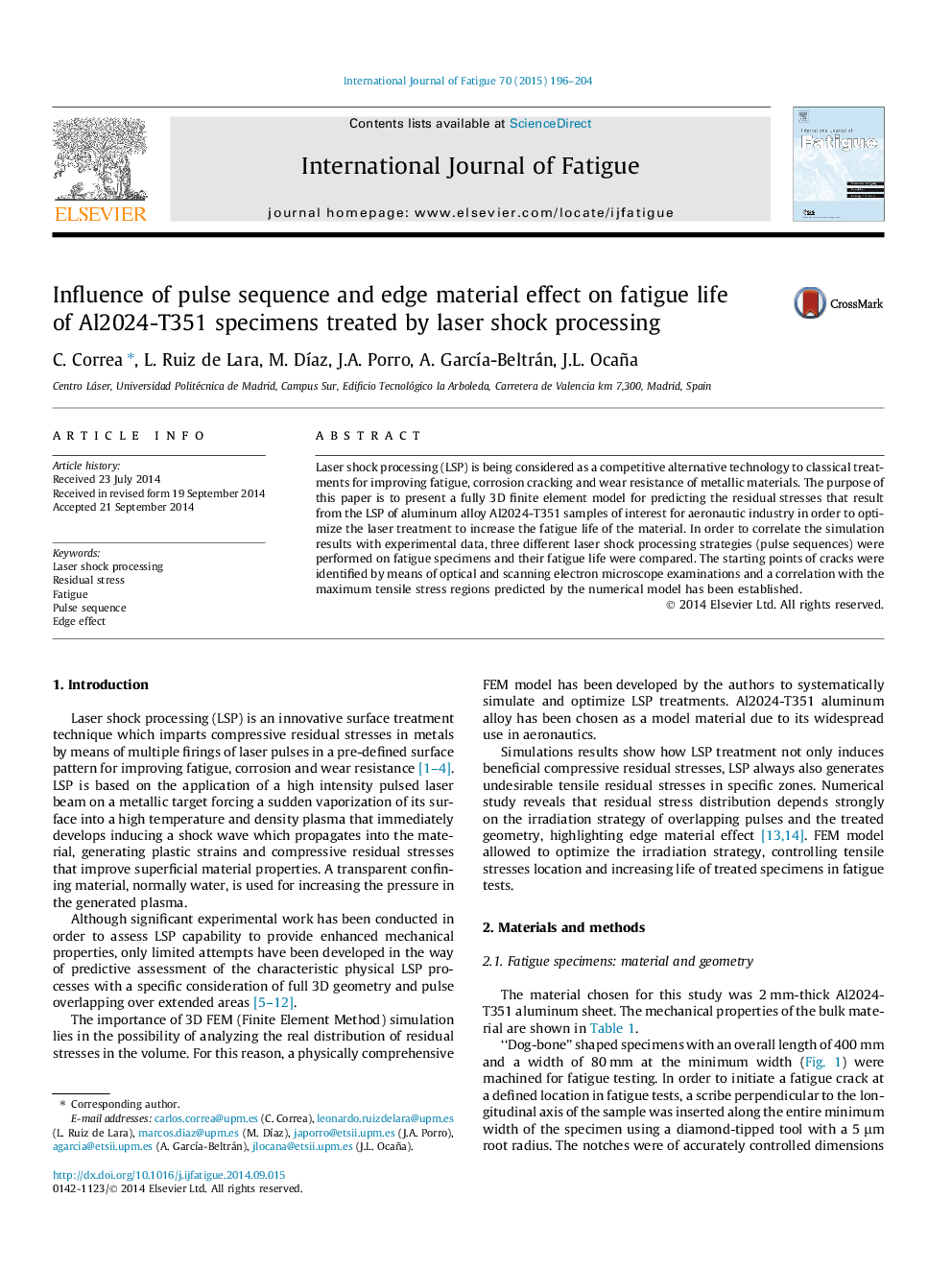| Article ID | Journal | Published Year | Pages | File Type |
|---|---|---|---|---|
| 7172033 | International Journal of Fatigue | 2015 | 9 Pages |
Abstract
Laser shock processing (LSP) is being considered as a competitive alternative technology to classical treatments for improving fatigue, corrosion cracking and wear resistance of metallic materials. The purpose of this paper is to present a fully 3D finite element model for predicting the residual stresses that result from the LSP of aluminum alloy Al2024-T351 samples of interest for aeronautic industry in order to optimize the laser treatment to increase the fatigue life of the material. In order to correlate the simulation results with experimental data, three different laser shock processing strategies (pulse sequences) were performed on fatigue specimens and their fatigue life were compared. The starting points of cracks were identified by means of optical and scanning electron microscope examinations and a correlation with the maximum tensile stress regions predicted by the numerical model has been established.
Related Topics
Physical Sciences and Engineering
Engineering
Mechanical Engineering
Authors
C. Correa, L. Ruiz de Lara, M. DÃaz, J.A. Porro, A. GarcÃa-Beltrán, J.L. Ocaña,
